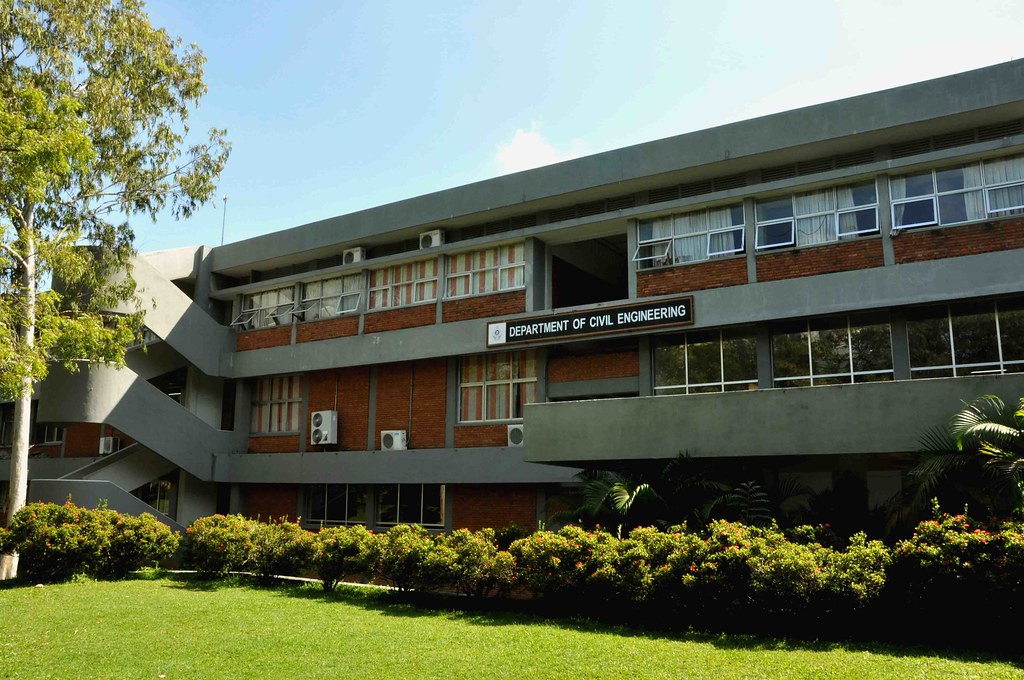
The Katubedda Campus was converted to the University of Moratuwa in 1978 making it an autonomous University and since then the Department grew rapidly to its present state. Due to its large size and expertise in diverse areas, the Department operates under six divisions, all of whom conduct postgraduate taught programmes and research programmes leading to Masters and PhD qualifications. The quantum of teaching, research and consultancy activities handled by the Department perhaps makes it one of the most active Departments in the University.
From 1985 the Department is housed in its own building complex at a picturesque site bordering the North-Eastern boundary of the University, fringed by the Bolgoda Lake. The Civil Engineering building complex has many features of Civil Engineering design and construction and consists of a total built area of nearly 8000 m2.
The main building of the Department of Civil Engineering houses many lecture halls, drawing rooms, a seminar room, a student study room, several purpose built laboratories, a drawing office, a workshop, a graduate computer room and a computer centre and an auditorium which can accommodate 300 persons. It also provides office space for over 40 academic staff. Facilities are also made available for research staff and graduate students. The rock mechanics laboratory is located on the ground floor of a separate building which also has three lecture rooms on the upper floor each with a capacity of 35 students. The Civil Engineering Research Centre was completed in 2011. The Environmental Engineering Laboratory is re-located in the new building. The building has 2 lecture halls, each with a capacity for 150 students, a computer laboratory for 100 students, a GIS centre, space for research students and staff, and a canteen.
The new 3-storied building for the UNESCO Madanjeet Singh Centre for South Asia Water Management (UMCSAWM) attached to the Department of Civil Engineering has just been completed at a location adjacent to the other buildings of the Department, funded by the South Asia Foundation (SAF), with the objective of promoting regional cooperation through South Asian Water Management Education. The UMCSAWM is the newest member to join the UNESCO Madanjeet Singh Institutions of Excellence and a landmark in the Sri Lankan university history as the first regional centre established to conduct full-time postgraduate degree programmes. The centre building has 2 lecture rooms with a capacity of 30 students, a computer room, study area and library space for postgraduate students, space for academic staff, research students and research assistants of the programme.
